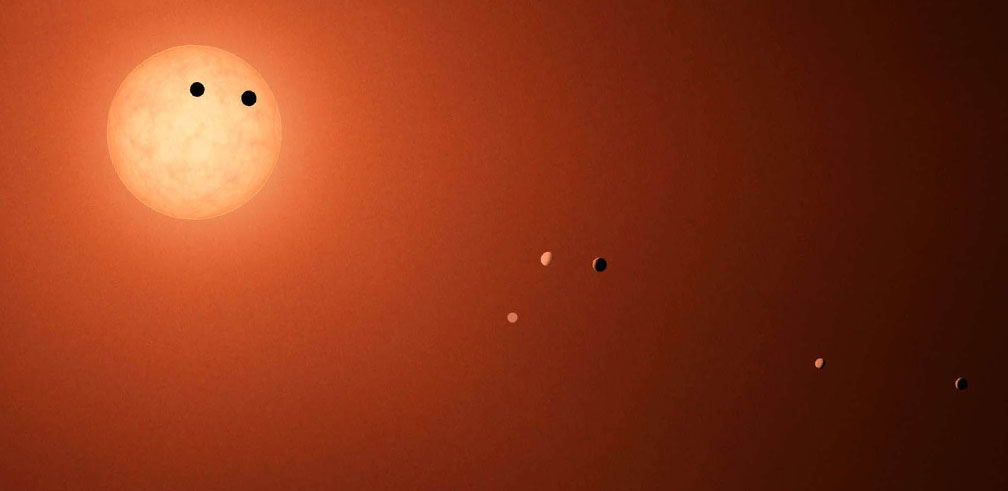
Les mystères de l’Univers et de ses origines fascinent depuis toujours les scientifiques et les ingénieurs belges. Un intérêt qui est loin de s’essouffler.
En 1927 déjà, le prêtre belge Georges Lemaître, professeur à l’Université catholique de Louvain, indiquait dans les "Annales de la Société scientifique de Bruxelles" que l’Univers était en expansion. Peu après, il proposa également sa "théorie de l’atome primitif", plus connue du grand public sous le nom de "Big Bang". Grâce à lui, l’Univers disposait d’un certificat de naissance.
Plus près de nous, les astronomes de l’Université de Liège ont découvert un étonnant système exoplanétaire doté de sept planètes tournoyant autour d’une étoile située à 40 années-lumière de la Terre. Des exoplanètes dont certaines pourraient bien abriter la vie….
Pour leurs recherches, les scientifiques peuvent compter sur les télescopes spatiaux tel Hubble, ou encore le Very Large Telescope (VLT) de l’Observatoire austral européen (ESO), dont la Belgique est un des états fondateurs. Un VLT dont les quatre télescopes auxiliaires ont été fabriqués en Wallonie! Sans parler du projet déjà bien avancé de l’ELT, l’Extremely Large Telescope, une machine à explorer l’Univers dotée d’un miroir principal de 39 mètres de diamètre.
Qu’il s’agisse du développement de télescopes, d’instruments équipant la Station spatiale internationale, de sondes interplanétaires ou encore des satellites: ces activités spatiales constituent le quotidien de nombreuses équipes scientifiques et industrielles de Bruxelles et de Wallonie.
Jusqu’à expédier un des leurs dans l’espace! Le Wallon Raphaël Liégeois a été recruté par l’Agence spatiale européenne (ESA) fin 2022 pour rejoindre, avec quatre autres candidats, sont groupe d’astronautes professionnels. Objectifs: la Station spatiale internationale mais aussi les futures missions lunaires.
<< Retour
The mysteries of the universe and its origins have always fascinated Belgian scientists and engineers. A fascination that is far from running out of steam.
As early as 1927, the Belgian priest Georges Lemaître, professor at the Catholic University of Louvain, indicated in the “Annals of the Scientific Society of Brussels” that the Universe was expanding. Shortly afterwards, he also proposed his “theory of the primitive atom”, better known to the general public as the “Big Bang”. Thanks to him, the Universe acquired its very own birth certificate.
Closer to home, astronomers at the University of Liège have discovered an amazing exoplanetary system with seven planets revolving around a star 40 light years from Earth. Exoplanets, including some which may well harbour life ...
For their research, scientists can rely on space telescopes such as Hubble, or the Very Large Telescope (VLT) at the European Southern Observatory (ESO), of which Belgium is one of the founding states. A VLT whose four auxiliary telescopes were built in Wallonia! Not to mention the ELT project, the Extremely Large Telescope, a machine for exploring the Universe with a main mirror that is 39 metres in diameter.
Whether it concerns the development of telescopes, instruments equipping the International Space Station, interplanetary probes or satellites: these space activities constitute the daily life of many scientific and industrial teams in Brussels and Wallonia.
Even sending one of their own into space! Walloon-born Raphaël Liégeois was recruited by the European Space Agency (ESA) at the end of 2022 to join a group of professional astronauts, along with four other candidates. Goals: the International Space Station and future lunar missions.
<< Back
Dernière mise à jour
19.09.2023 - 14:44
Retour